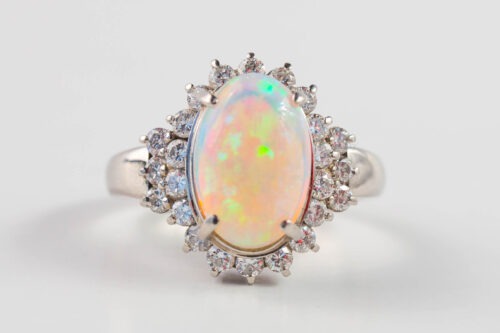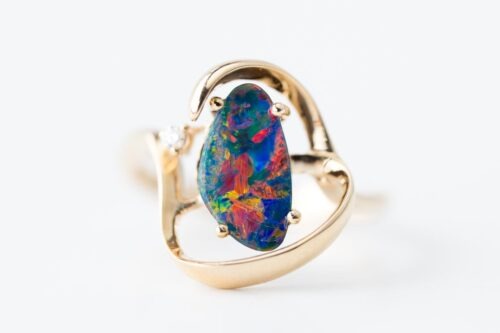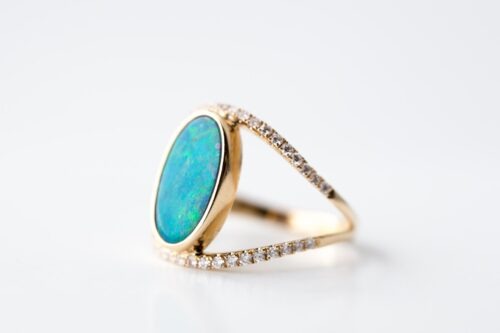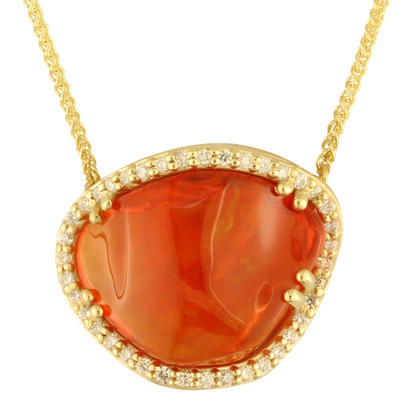What else in the world can you wear that resembles the Northern Lights? Or the depths of the ocean? Or a view of the Earth from space? An opal can be a rainbow. It can glow like a crackling fireplace on a cold, winter night. It looks like a dream, yet it feels so real.
The kaleidoscopic phenomenon of opal is entrancing, which is why the Romans called it “opalus,” meaning “precious stone.” No two opals are alike, and across the spectrum you’ll see drastic differences in colors and pattern. If you’re looking for a unique gemstone to add to your collection, look no further than the outstanding opal.
Here are some questions we commonly get about opal…
Is Opal expensive?
One of the many great things about opal is that it can range from very affordable to very valuable. No matter your budget, there is a beautiful opal for you!
Can I wear my opal piece every day?
If it is a pendant or earrings, absolutely. Opals can be fragile, so we recommend being very careful when wearing them. You can wear an opal ring or bracelet every day if you take exceptional caution with it, but we usually recommend using your own discretion day-to-day to decrease the chance of damaging your stone.
How can you tell if an opal is genuine?
We advise you bring the opal to our store to have it evaluated by a certified gemologist appraiser. For more information about these services, check out this blog post: https://www.hperryjewelers.com/do-i-need-an-appraisal/
What is a “doublet?”
The term “opal doublet” or “opal triplet” refers to an assembled stone consisting of a thin slice of opal cemented to a backing; usually onyx, obsidian, or another black stone or glass. In the case of a triplet, there is a clear top layer to protect it. This is not to be confused with black opal, which has a naturally dark background color. Black opals, in some cases, can be the most valuable of opal types, whereas doublets and triplets tend to be much less valuable.
Where does opal come from?
About 90% of opals come from Australia. Ethiopian opals and Mexican fire opals are other types of opal you may see in a jewelry store, though opal does come from other places around the world such as Brazil and Oregon. In fact, fire opal can come from Mexico or Oregon, so in a jewelry store you’ll normally just hear it referred to as “fire opal.”
Does “fire opal” mean it’s a white opal with a lot of fire?
No! Don’t feel bad, this is a very common misconception. Fire opal is actually opal with a background color of transparent to transparent-yellow, orange, or red. It looks very different from the traditional white opal you’ve seen in jewelry stores, and it’s one of the few opal types that is cut as both faceted and cabochon. The most valuable fire opals live up to their name, as they display bright red-orange or a vivid red color.
How do I care for my opal?
Avoid overheating, as it can cause the opal to crack. It is safe to store your opal jewelry in your jewelry box. Some people believe that opals have to be stored in water, and while this won’t hurt them (unless it’s a doublet or triplet, in which case the water would soften the glue holding it all together), storing opals in water is not necessary. Have your opal jewelry cleaned and checked every 6 months by a jewelry professional. At HPerry Jewelers, we offer this service at no charge.
If you have any more questions about opal jewelry, don’t be shy! Our qualified jewelry professionals would love to answer any questions you may have.
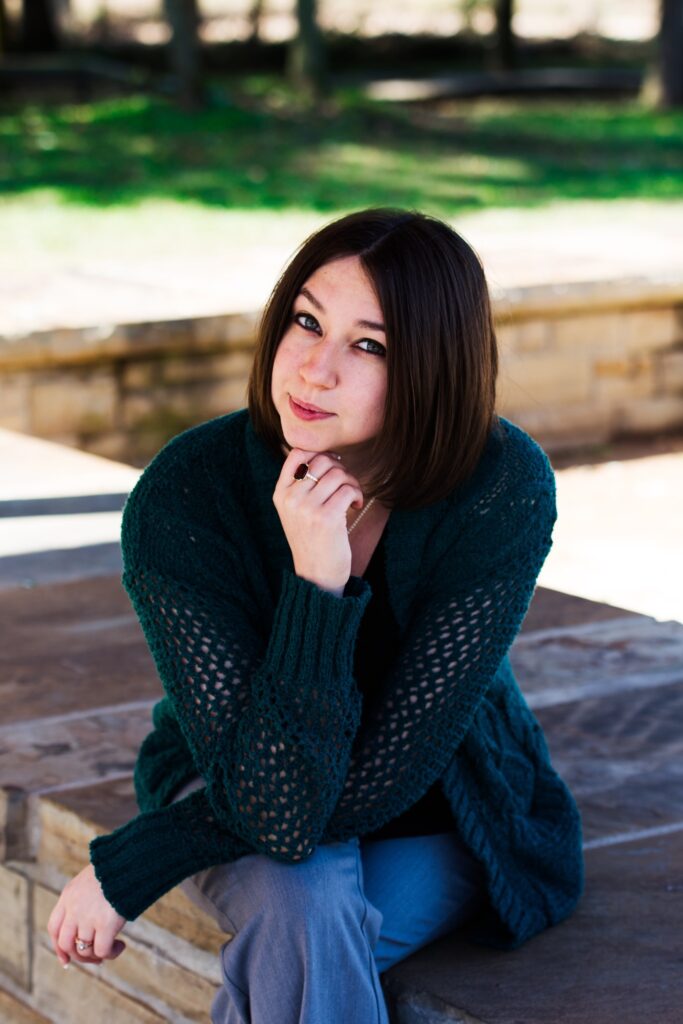
Jordan Rayne
GIA Diamonds Graduate, GIA AJP
Designer and Consultant for HPerry Jewelers since 2013

